A Plant Mom Grows in Brooklyn
Latest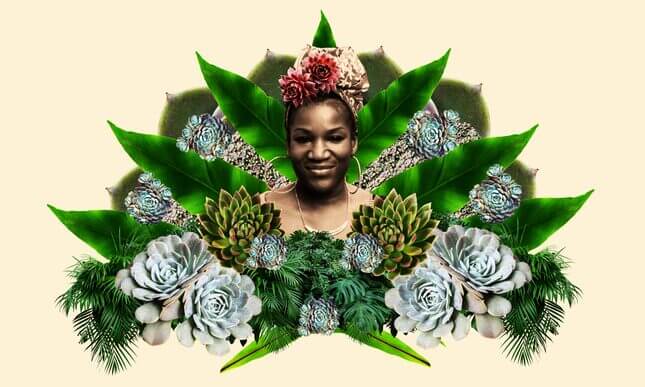

One dreary spring morning, I went on a Google search to find out how to measure foot candles. What is a foot candle? A foot candle is exactly what it sounds like (or maybe it isn’t): the intensity of light one candle produces from one foot away (this isn’t boring! It’s science!), which basically tells you how much light a given area of space receives. Why did I need to know how much scientific light my apartment was getting? Because I have friends that are plants—many of them—which need sunlight to grow.
To put things in perspective, I don’t have over 670 plants like this woman, who puts me to shame. I don’t even own 50! But I do have more than a few. In autumn of last year, I bought my first potted plants at a neighborhood flower shop—a gorgeous Pink Quill (a Bromeliad with a gorgeous flower) and a Dracaena, which has leaves that dangle like Sideshow Bob’s hair. The main reason I bought it was that I passed by the shop and thought, I should get a plant. I had no idea of these plants’ names or origins. I simply like decorating, and they seemed like the type of plants that would enhance the decor and peaceful vibe of my space without being intimidating.
Soon after, I picked up two more at one of those gentrified organic grocery stores with rows upon rows of La Croix in the display window. One was a fairly large Snake plant—a spiky beauty also known as a Mother-in-Law’s Tongue (which seems sexist). The other, a Silver Pothos (pictured below), I got because it was silvery and pretty.

After doing some light research, I learned that I’d unknowingly made a sensible choice in buying a Snake plant, because as a species it’s known to be nearly un-killable—much like roaches or a man’s pride. Things began to spiral (or rather, life got better and full of plants) not long after. I have since gone from owning zero plants to mothering 22—a number that’s growing—in different varieties.
Next to the South-facing window (which is great for light, which means a lot of foot candles) in my living room, I placed a Fiddle Leaf Fig on a stool. (I later bought a proper plant stand for it.) Next to the Fig is a moderately sized Rubber plant. The Dracaena hugs the floor (on top of my Roomba). On the radiator, which is off right now, there’s an Alocasia (pictured below), its veiny leaves like the forehead of a Guido straining to pull a final deadlift. On the bookcase are a pair of Philodendron (a vining plant that’s easy to care for), one young (a cutting I received from my great coworker Megan Reynolds), one adolescent; and beside them, the Silver Pothos, a baby Peperomia, and also a young Philodendron Silver.
There’s more.
On a rack near the window, next to the Snake, I have a towering cactus and a Gasteraloe succulent that looks like Bowser’s head. A smaller Snake plant sits on the mantle. On a wooden work desk, there’s a Milk Tree, which looks like a cactus but technically isn’t; a baby Rubber plant; and a Rattlesnake plant, which is a pretty Calathea type that closes its leaves at night, as if in slumber or prayer. Next to that, on a floor rack: a Monstera. And on the countertop: a Bird’s Nest fern, a hanging Rhipsalis cactus, and a Pilea Friendship Plant I recently bought at Lowe’s. In the bedroom, on my dresser, there’s an African Spear (the Sanseveria cylindrica, in the Snake family), along with a String of Pearls hanging in the window. And on the kitchen window sill, a Pilea peperomioides (or Chinese Money Plant) with disc-shaped leaves. If these scientific names and nicknames sound foreign to you, then hello, you are me one year ago.
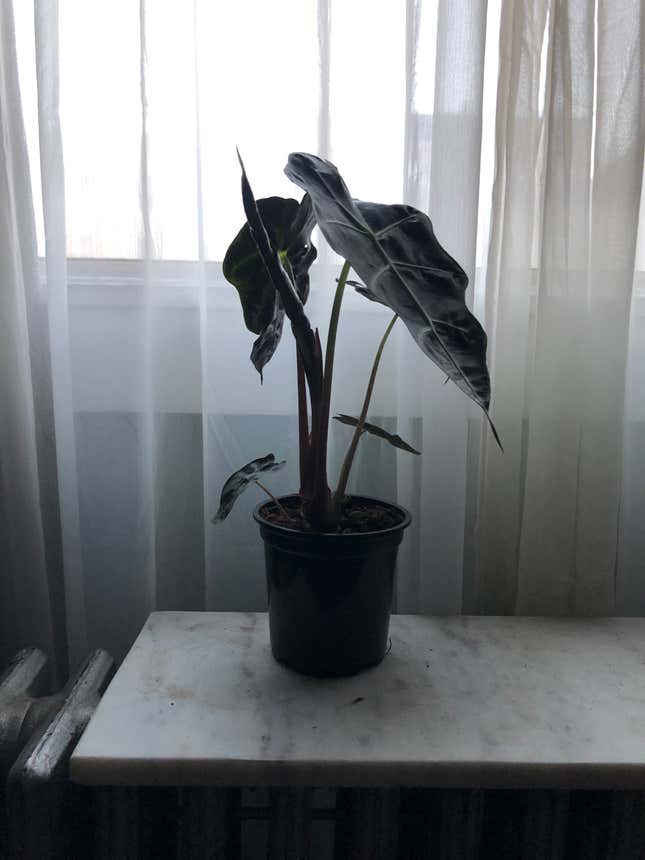
My main reason for waiting this long to become a delightful, scary plant lady before, other than my lack of confidence in keeping them alive, had to do with roaches. While living in Astoria in my 20s, I struggled with a roach infestation in my studio apartment. I got a plant as soon as I moved in, and the first time I went to water that plant, I saw a roach lurking behind the leaf. I looked up online that roaches were attracted to plants or water or whatever and immediately threw it out and swore off plants from thereon, which was shortsighted of me.
As part of my initial round of plant purchases, I also bought a purply Echeveria succulent, which I later killed via accidental slaughter. It was around this time that I started researching and learning more about what a plant actually is: A living thing. My friend also told me about the Instagram account @thesill (operated by The Sill, which sells plants both online and in their physical NYC shops), so I followed them, the first of many plant Instagrams I began to track as my interest ballooned into an obsession.
It was around this time that I started researching and learning more about what a plant actually is—a living thing.
The plant sites I researched were bountiful, including but not limited to: The Spruce, Costa Farms, Gardening Know How, and Dave’s Garden. There are, in addition, many online plant forums where people ask plant-related questions. I have a few main sources I frequent to buy them when I’m feeling green: The aforementioned The Sill, a nursery in Bedford-Stuyvesant called Seasons 358 (owned by a black woman named Deborah), the above-mentioned organic spot near my home, and a hipster Brooklyn spot called Tula House. I subscribed to a podcast about caring for plants (Bloom and Groom Radio), and a few months ago, I went to a Tula House workshop about how to repot plants, because that was another care aspect that confounded me. It was news to me that plants outgrow their pots and often need new ones. I had always wanted a hobby and finally had one. Everything was coming up Milhouse.
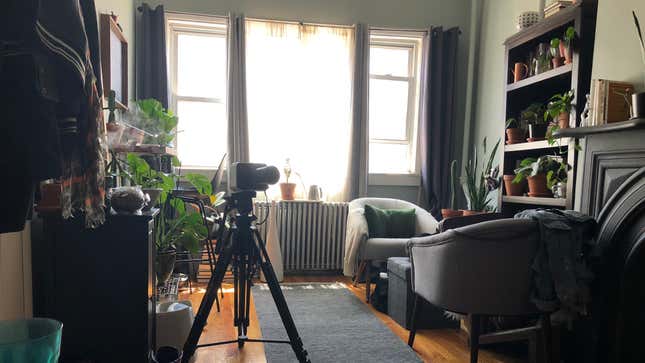
As I began to spread the gospel of plant mothering to friends near and far, I discovered a couple things. One: Being a “plant mom” or “plant parent” appears to be a trend among millennials. I had unknowingly and horrifically become one of them. Two: People are bad at keeping plants alive, and so I kept hearing things like, “I kill all my plants” (from serial killers). Or, “My plant always looks sad.” I was determined not to become a statistic.
Sure, plants are an evergreen (heh) topic—they have existed on Earth for eons after all. Yet there is an observable if anecdotal increase in younger people’s very public interest in houseplants. No doubt, Instagram has made it cooler. Besides the genuine appreciation I’m sure people have, plants undeniably look beautiful and make for great pictures. In a piece about the millennial obsession in September 2017, The Washington Post wrote:
Go on, search the hashtag #urbanjungle. Or #monsteramonday. Or #plantgang.
“It’s just nice,” says Dornan-Smith, “when you take pictures of your house, and there is this big sculptural plant in the background.”
Carter’s plant-filled account has 33,000 followers (some of whom message him for plant tips, others asking whether they can just come see his urban jungle in person). A popular blog called the Jungalow also showcases the plant-filled life.
It’s tempting to see all the beautiful plants on display on Instagram and want to indulge, though that is not how I got started. While I felt that I’d found a community of plant lovers online, it’s weird to be part of what could be considered a superficial trend. I hadn’t thought about plants much (or even noticed this phenomenon) until I bought some myself.
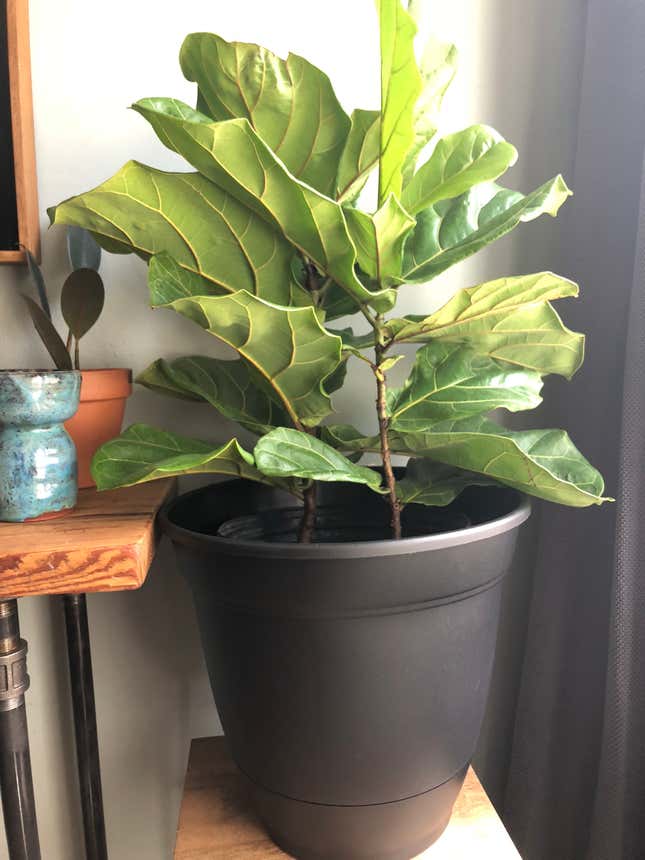
The fact is, there are great things I’ve learned from the internet as a result of the uptick in interest in plants—and therefore a deluge of articles—and from speaking to experts in person. Like many, my biggest fear before they grew on me was that I couldn’t keep a plant alive to save my own life. And so, the one thing that’s helped me is also a thing that makes me annoying to be and work around: a maniacal need for organization.
I keep an Evernote database with a breakdown of all the plants I own, along with information about what type of soil each needs, their water needs, amount of sunlight, fertilizer, etc., all of which is based on the plant’s original natural environment. (So if it’s a tropical plant, it wants humidity, but a desert plant is used to dry air. I have a couple humidifiers for the tropical plants.) In other words, though they are in my home, that’s not their homeland.
Every one of the experts I spoke to has said the best system for watering is to check the top few inches of the soil to determine whether the plant is dry—you literally dig your finger into the soil and feel around, kind of sexually… see what comes out. So I finger the soil on a regular basis, but I also like to keep a written inventory of all my plants, because it’s the only way I’ll ever remember when to even do a water check. For that, I use the Reminders app in my phone to note the days when I’ve watered each plant and to set a reminder for the date I should check to water them. On average, watering happens once a week, but this isn’t an exact science at all, and keep in mind that checking the plants doesn’t mean I’m watering them at that time.
When I do water, I use a water meter I got from Amazon, as an extra buffer from overwatering. Like I said, I’m extra. There’s even more minutiae to this. Here are some basics from The Sill for example:
Here are some golden rules for watering your plants. Keep these on hand when watering:
Always water after repotting.
Plants in large pots dry out more slowly than plants in smaller pots.
Plants in bright daylight dry out more quickly than plants in low light.
Humid air keeps soil moist for longer than dry air.
Also:
Plant size will also determine how much water your plant needs. In smaller pots with less soil, the soil will dry out faster than in larger pots with lots of soil. If you have two of the same plant and one is larger than other, one will need water more often than the other.
People kill plants because plants need water and people don’t know how or when to water them. (Fact: Overwatering is the biggest killer of many plants.) People also kill plants because plants need sunlight and if you place your plant in the wrong spot, it will die. Every plant needs sunlight, but different plant species need different levels of light, which means there are high light plants (a Palm), medium light (Monstera), and those that can tolerate low light (the Snake).
People also kill plants (although this may be less common) because certain plants require a specific type of soil. Placing a Cactus in regular potting soil might kill it because water won’t drain well enough. This is a lot of information for one brain to hold, but if you care enough, it becomes intuitive and doesn’t have to be so complicated. (Honestly, just give it the right soil, water the damn soil when it’s dry, and give the plant sunlight unless it’s a low light plant, which gives you more freedom. Repot when necessary.) I’ve already committed a lot of the knowledge to memory and am able to spew it out as a boring party trick, which is what I did recently while watching a movie with some Jezebel staffers and Ellie Shechet asked, “Are you talking about plants again?”
Why so many plants? Is this like having a God complex? Maybe? Yes.
It’s a bit of self-care also, I presume. I found that I like having living things around me. I like how they make my apartment look and feel. I like having some sort of hobby and regimen, and I find it wonderful that I can bring something as beautiful, strange, and complex as plant life into my home. While watching one of those nature documentaries about plants on Netflix, I learned about a vining plant that reaches for sunlight from the jungle floor, using a rock as an anchor. The film showed a time lapse of the growth and it looked like the plant was scaling a rock on its own.
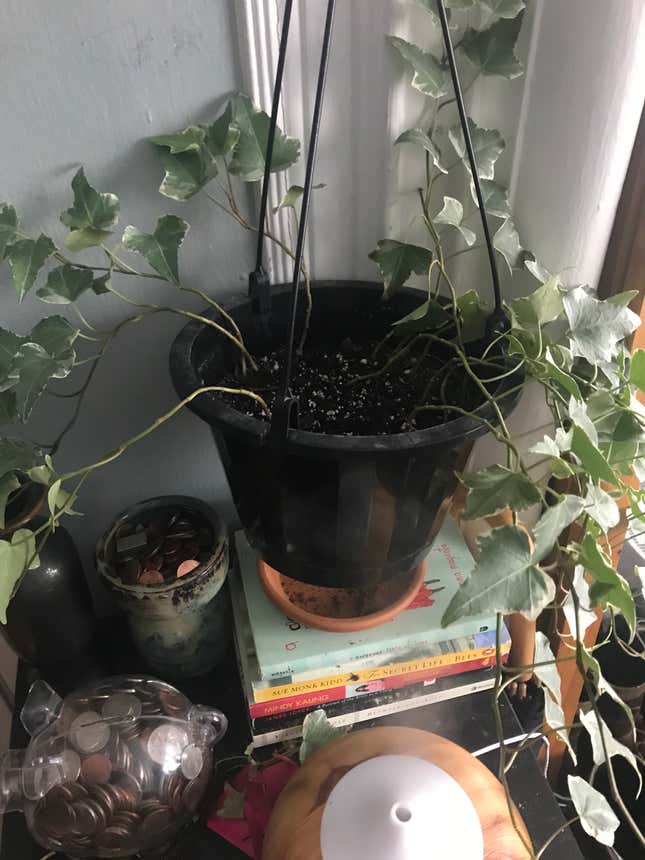
This has turned into a blog about me, an amateur botanist, giving tips. But I assure you I have killed my share of plants. At the onset of plant motherhood, I owned a couple of cute succulents: the above-mentioned Echeveria and a Zebra plant. Neither survived because succulents seem easy to care for, but I feel like that’s deceptive. Even though they don’t need constant watering (their leaves store water), they do require high direct light and I didn’t realize this necessary balance, so I found myself both overwatering them and not providing them enough light. They died. I also got rid of an Agave plant, the Pink Quill, and an English Ivy, pictured left in dire condition (it was a lot fuller when I bought it). R.I.P.
If this happens to you, find relief in the fact that plant death comes to most plant owners because caring for a living thing is tough. With every dead plant, a new one rises, plus now that I know how to be a good mom, I’m confident I can keep them actively growing. Somewhere along my journey, I found the internet of plants hiding in plain sight and, more important, I unlocked a passion. It now feels weird that I hadn’t noticed all this life before.